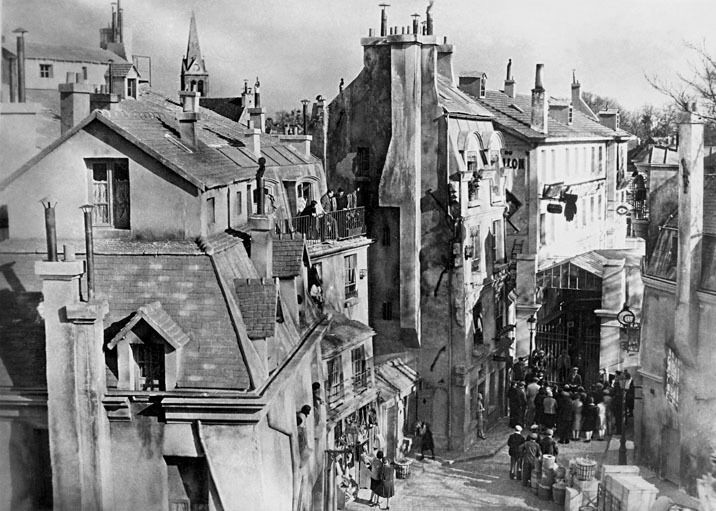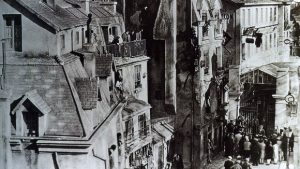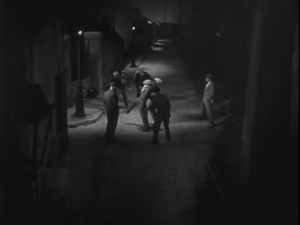
Maher Al Hariri on Sous Les Toits de Paris (1930)
Sous les toits de Paris begins and ends with the same subject, only with opposite movements. That subject is as the film’s title suggests, the roof tops and chimneys of Paris. The film begins with an establishing shot getting closer towards the roof tops, and zooming into the city’s streets, while it ended with a zoom out of the streets, all the way back to the roof tops and smoky chimneys. This creates the effect of visiting and departing from a tale. A tale is the best description possible to the film’s story, because at least to me, the word tale emphasises the story aspect, in this case devoid from any moral behind it.

On a technical level, the film has exhibited a mixture of camera movements and techniques, some of which were already in use previously and featured in films like Cabiria, and Atlantide, whilst others were actually new. A featured example of the old techniques is when Albert and Pola are on their way to Albert’s apartment, where in one scene they walk towards the right of the screen, followed by a scene where they move towards the left side, then a walk towards the camera, and away from it, in a play with movement to create the impression of length in time and distance. In addition, shots from skewed angles, and close ups are still deployed, only with a significant increase in the use of close up shots than in the past. On the other hand, in Sous les toits de Paris, the camera begins to become more mobile, which brings about new movements such as what appears to be a shot taken with the use of a crane, where the camera moves steadily, and without shaking upwards and downwards a building, showing what is going on, on every storey of that building. Another unprecedented technique is an over-head shot taken downwards, showing an eagle view so to speak, of the disco’s interior with people dancing. A third new technique is focusing a frame on an object, whilst keeping the background out of focus.

Another remarkable aspect in the film was the director’s focus on feet, where they were featured in close ups several times. However, a particularly interesting feature was of Pola’s feet. In the scene where she spends the night at Albert’s, she is shown taking off her leggings, in a slow motion, in a context of sexual tension at least on Albert’s side. In a following shot, and as she was growing weary of Albert’s continuous sexual harassments, she is shown to put them on, in an effort to leave, although that never happens. This raises the question, is this part of a director’s fetish, or was it a mean to hint to nudity and sex, in a context that predated the sexual revolution, and was more conservative regarding sex, especially in film?!

